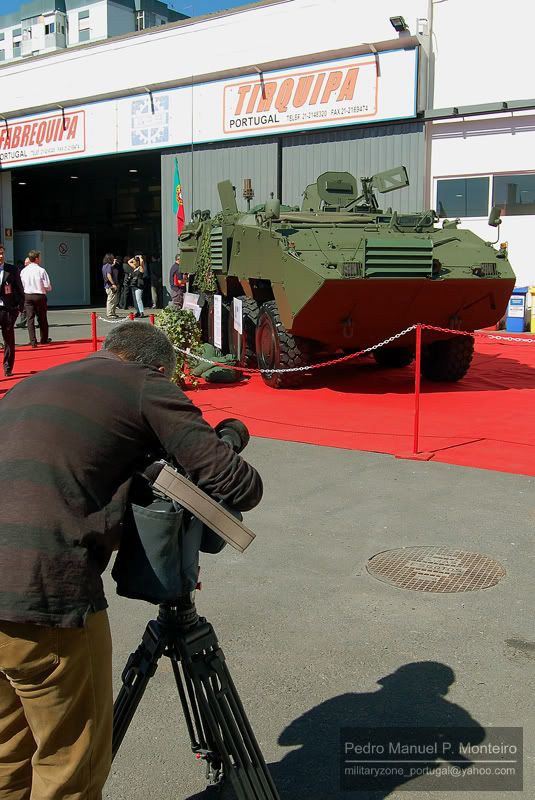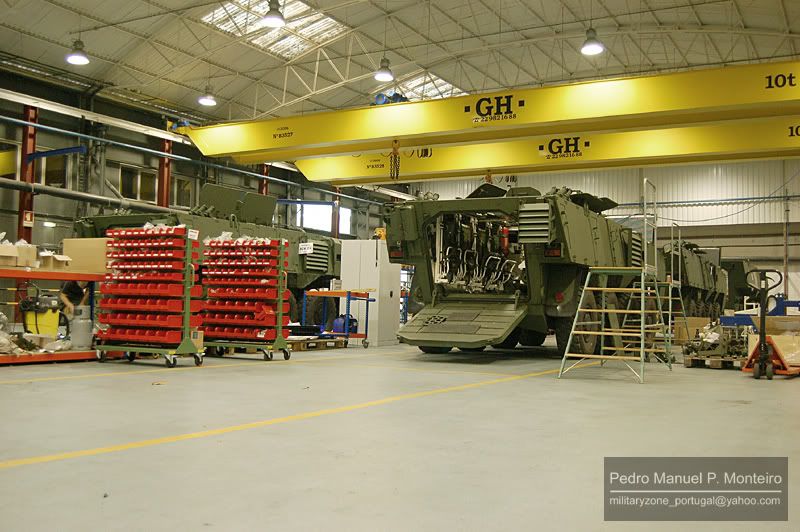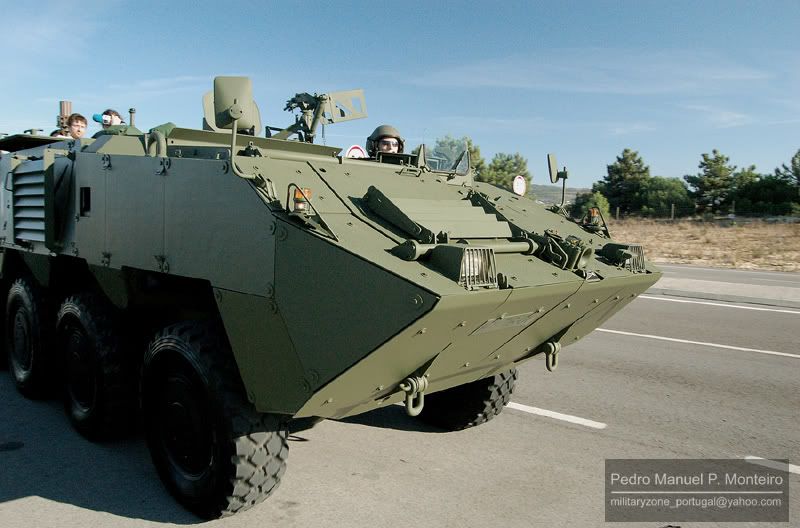This year, the commemoration of the Day of the Brigada de Reacção Rápida (Quick Reaction Brigade) had one innovation: the ceremony did not take place in the military base of Tancos, as usual, but in the downtown of Tomar, one of the cities where is located a combat unit of this Portuguese Army’s light brigade.
Hence, the population – after all, the source for new volunteers - had a rare opportunity of contact with the men and equipments of this brigade and to know more about their missions and operational deployment – for example, the Brigada de Reacção Rápida has, currently, a company deployed in the demanding scenario of Afghanistan.
The ceremony included, on the one hand, a military parade with about 1.000 men – including troops equipped for combat – and, on the other hand, a demonstration of capabilities in the local stadium. It was, indeed, a good oportunity for the Brigada de Reacção Rápida promote a closer contact with the local population, and, for what I saw, the population seemed very interested in this activity.
I made a report of the event for the Spanish magazine Fuerzas Militares del Mundo as part of an article about the Portuguese Army which I am writing.
Hence, the population – after all, the source for new volunteers - had a rare opportunity of contact with the men and equipments of this brigade and to know more about their missions and operational deployment – for example, the Brigada de Reacção Rápida has, currently, a company deployed in the demanding scenario of Afghanistan.
The ceremony included, on the one hand, a military parade with about 1.000 men – including troops equipped for combat – and, on the other hand, a demonstration of capabilities in the local stadium. It was, indeed, a good oportunity for the Brigada de Reacção Rápida promote a closer contact with the local population, and, for what I saw, the population seemed very interested in this activity.
I made a report of the event for the Spanish magazine Fuerzas Militares del Mundo as part of an article about the Portuguese Army which I am writing.
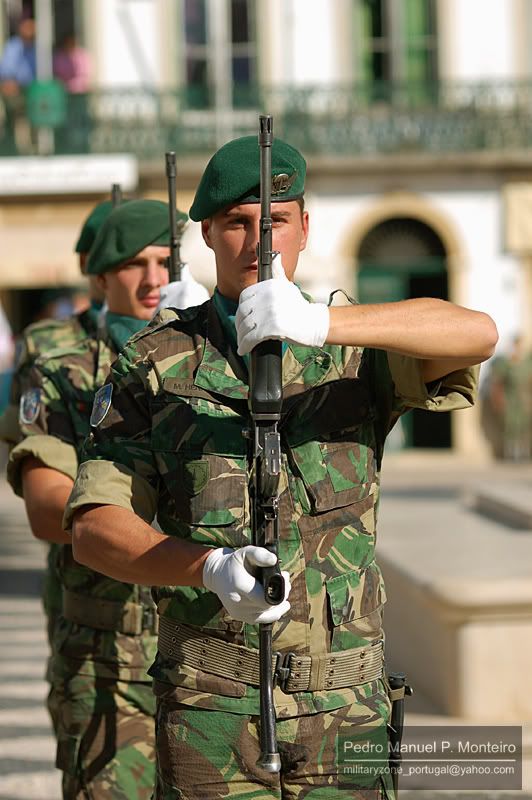 A portuguese paratrooper. They are easily recognizable for their green barret. In the begining of the 1990s, they were part of the Air Force. They were the first combat force which was sent by Portugal for a peacekeeping operation - which ocurred in 1996, in Bosnia [click to enlarge].
A portuguese paratrooper. They are easily recognizable for their green barret. In the begining of the 1990s, they were part of the Air Force. They were the first combat force which was sent by Portugal for a peacekeeping operation - which ocurred in 1996, in Bosnia [click to enlarge].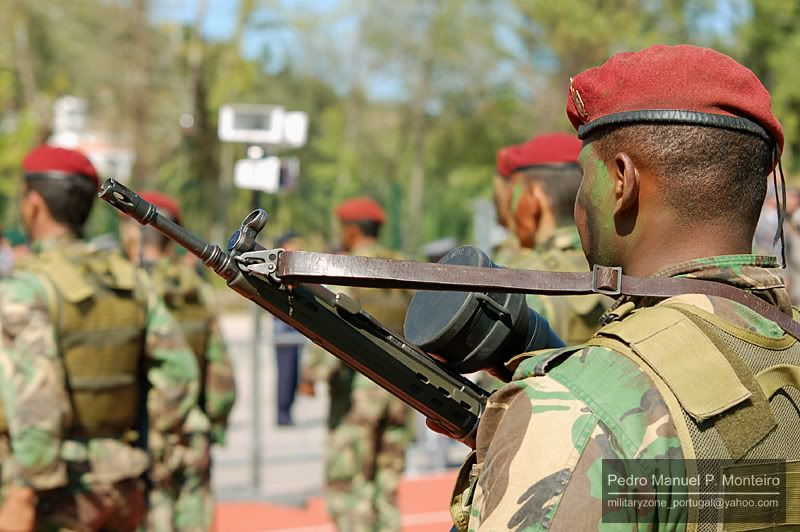
A comando in the military ceremony. This is a military unit for assault and antiterrorist operations which is now part of the new Brigada de Reacção Rápida. Along with the paratroops, they are the military force which is responsible for the mission in Afghanistan - the comandos rotate with the paratroops every six months.
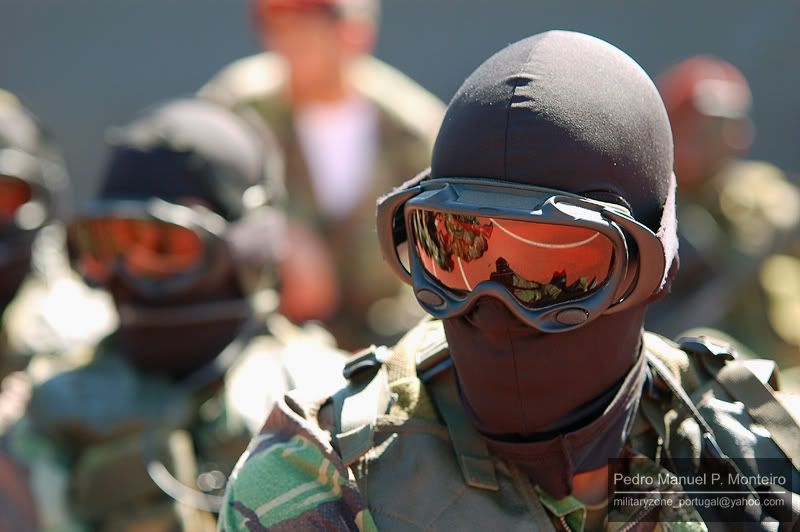
A member of the portuguese special operations. The unit of special operations of the Army is part of the Brigada de Reacção Rápida, together with the paratroops and the comandos, an assault infantry unit.
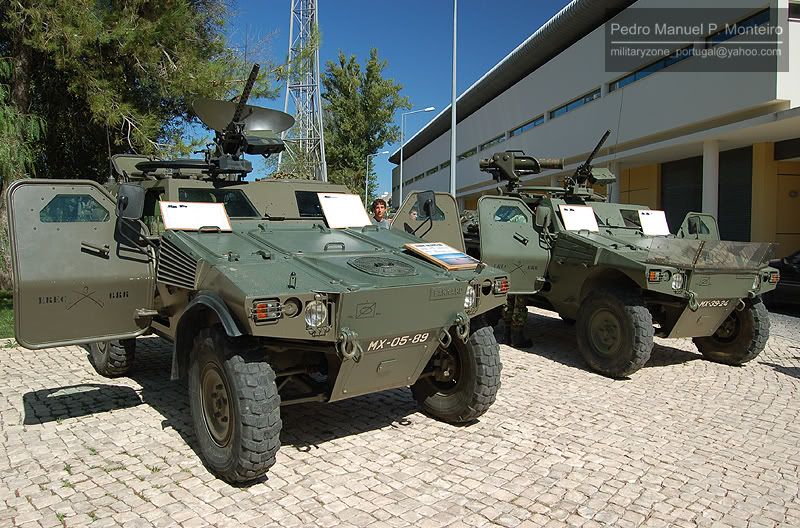 Two french-built Panhard VBL armoured vehicles. They are assigned to the Regimento de Cavalaria nº 3 (3rd Cavalry Regiment), the unit responsible for the reconnaissance squadron of the Brigada de Reacção Rápida. Notice the anti-tank missile Milan and the AN/PPS-5B radar.
Two french-built Panhard VBL armoured vehicles. They are assigned to the Regimento de Cavalaria nº 3 (3rd Cavalry Regiment), the unit responsible for the reconnaissance squadron of the Brigada de Reacção Rápida. Notice the anti-tank missile Milan and the AN/PPS-5B radar.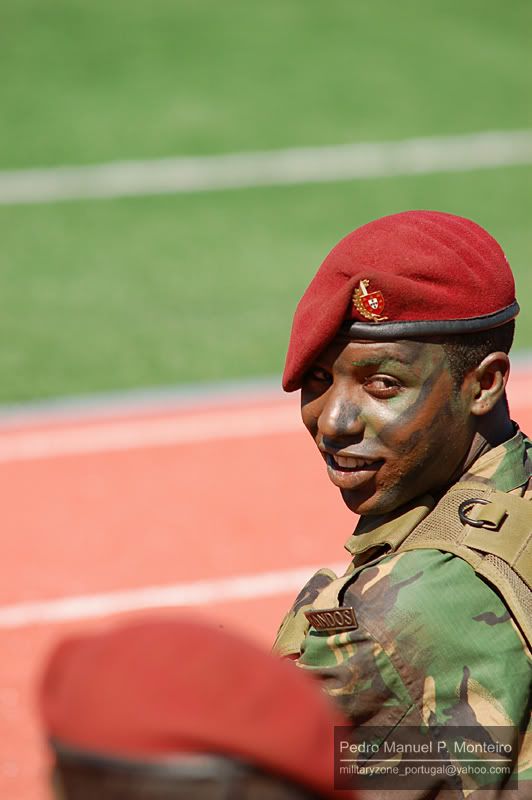 A different kind of photo - in fact, a portrait of a portuguese comando. The companionship between these men is one of the key elements of the unit, which is known by its singular identity and traditions [click to enlarge].
A different kind of photo - in fact, a portrait of a portuguese comando. The companionship between these men is one of the key elements of the unit, which is known by its singular identity and traditions [click to enlarge].Pedro Monteiro

